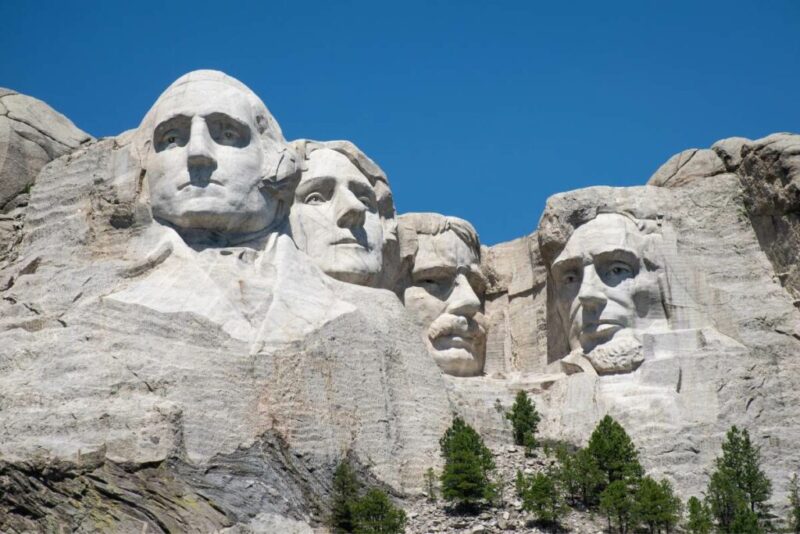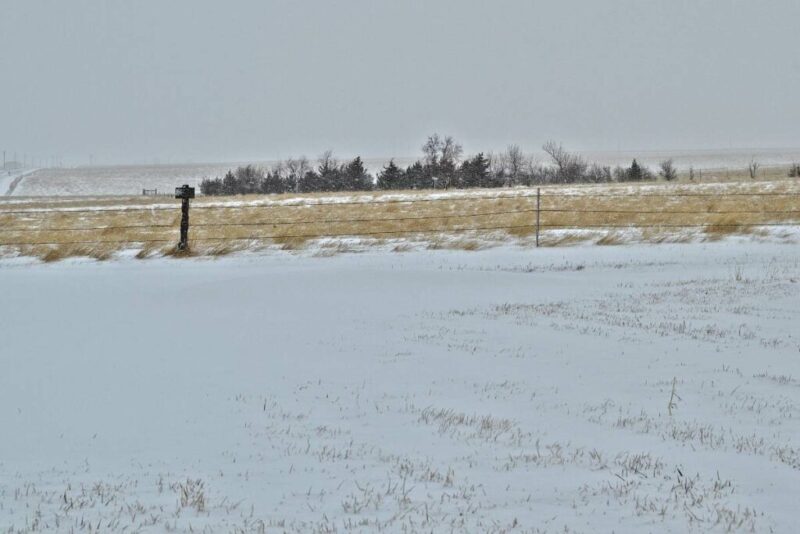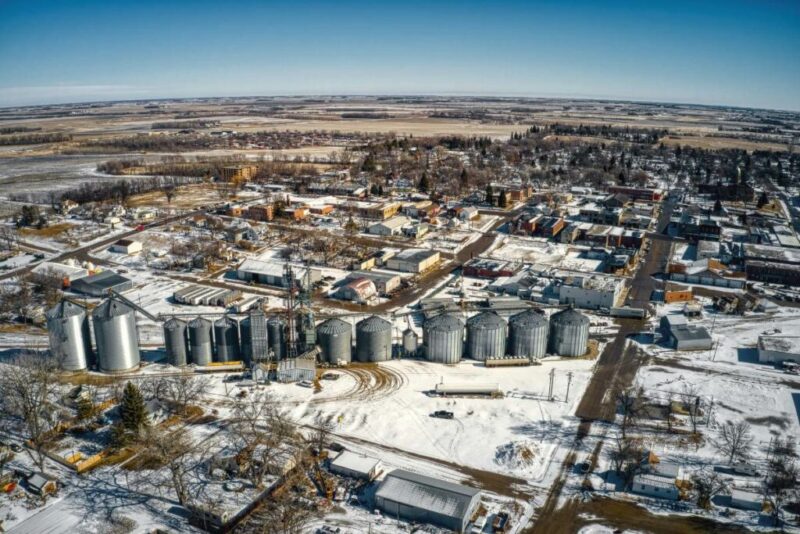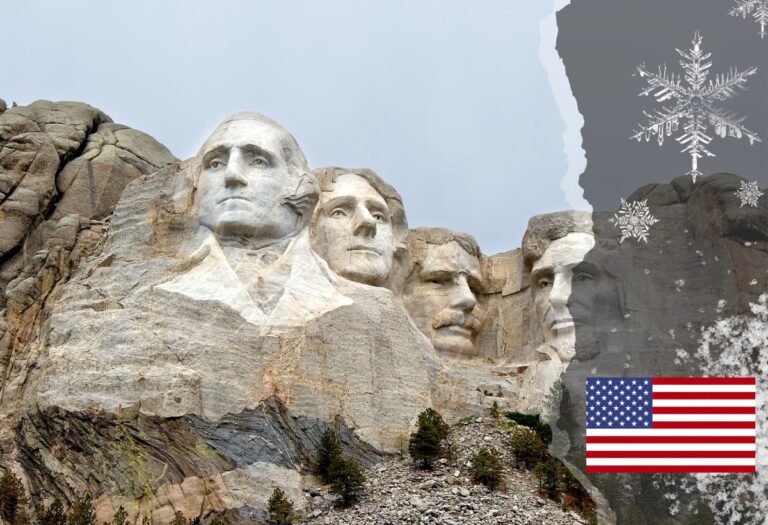South Dakota is a state located in the Midwest region of the United States. Known for its vast prairies, rugged Black Hills, and historical landmarks, many people may wonder about its weather patterns. One question that often comes to mind is, Does It Snow in South Dakota? If you’re curious to learn more about this topic, keep reading as we dive into the details.
Does It Snow in South Dakota?

Yes, it does snow in South Dakota. The state has a continental climate, which means it experiences cold winters with moderate to heavy snowfall and warm summers. The amount of snowfall varies depending on the region, with the western part of the state typically receiving more snow than the eastern part.
The Black Hills, located in the southwestern part of the state, often receive the most snowfall.
Additionally, the state’s elevation also plays a role in determining the amount of snowfall, with higher elevations receiving more snow than lower elevations.
How Often Does It Snow In South Dakota?
The frequency of snowfall in South Dakota can vary from year to year, but it generally snows multiple times during the winter months. The state’s average annual snowfall ranges from around 39 inches in the southeastern part of the state to more than 60 inches in the Black Hills.
The state’s snowfall typically begins in late October or early November and continues through March or April. The heaviest snowfall usually occurs in December, January, and February. Some areas in the Black Hills can experience snowfall even in the summer, but it is very rare.
The frequency of snowfall can also depend on the location; for example, higher elevations tend to receive more snowfall than lower elevations. The western part of the state also tends to receive more snowfall than the eastern part.
Overall, South Dakota experiences snowfall on a regular basis during the winter months, with the heaviest snowfall occurring in the Black Hills region.
When Does it Snow In South Dakota?

The timing of snowfall in South Dakota typically starts in late October or early November and continues through March or April.
The state’s snowfall season is generally considered to be from November to April. During this period, the state can expect to see snowfall on a regular basis.
The heaviest snowfall usually occurs in December, January, and February, with these months being the peak of the snow season. However, it’s worth noting that the timing of snowfall can vary from year to year and can be affected by weather patterns and climate conditions.
Additionally, location also plays a role in determining the timing of snowfall. The western part of the state tends to receive snow earlier and for a longer period of time than the eastern part of the state.
The Black Hills, which are located in the southwestern part of the state, often receive the most snowfall, and snowfall can start as early as October and continue to May in some cases.
Overall, while the timing of snowfall in South Dakota can vary, it is generally expected to occur between November and April, with the heaviest snowfall typically occurring in December, January, and February.
What Is the Climate Like in South Dakota, USA?
South Dakota, located in the Midwest region of the United States, has a continental climate. This means that it experiences a wide range of temperatures and weather conditions throughout the year. The state is known for its hot summers and cold winters, with a high temperature range, and strong winds.
The state’s average temperature in the summer reaches up to around mid 80s Fahrenheit with occasional heat waves that can reach up to 90s Fahrenheit. On the other hand, the winter temperature can drop as low as -30 degrees Fahrenheit with occasional blizzards.
South Dakota also experiences changes in humidity, the humidity is low in the summer and high in the winter. It also receives an average of around 23 inches of precipitation per year, with the majority of it falling during the spring and summer months.
The state receives moderate to heavy snowfall during the winter months, with the western part of the state receiving more snow than the eastern part, and the Black Hills receiving the most snowfall.
The state also experiences severe weather conditions, tornadoes and thunderstorms are common during the spring and summer months. The state is also known for its windy conditions, with winds reaching as high as 30-40 mph, which can make the already cold winter weather even more challenging.
Overall, South Dakota’s climate is characterized by hot summers, cold winters, strong winds, and changes in humidity. The state also experiences regular precipitation throughout the year, with the majority of it falling during the spring and summer months. Severe weather conditions like tornadoes and thunderstorms are also a common occurrence in the state.
The Seasons of South Dakota
South Dakota experiences four distinct seasons: spring, summer, fall, and winter. Each season has its own unique weather patterns and characteristics.
Spring in South Dakota is typically from March to May. During this time, the state experiences rising temperatures and the emergence of new vegetation. The state also receives regular precipitation during this time, with the majority of it falling in the form of rain. Temperatures typically range from the mid-40s to the mid-60s Fahrenheit.
Summer in South Dakota is typically from June to August. During this time, the state experiences hot temperatures and high humidity. The state also receives regular precipitation during this time, with the majority of it falling in the form of thunderstorms. Temperatures typically range from the mid-70s to the mid-90s Fahrenheit.
Fall in South Dakota is typically from September to November. During this time, the state experiences cooler temperatures and the changing of leaves. The state also receives regular precipitation during this time, with the majority of it falling in the form of rain. Temperatures typically range from the mid-40s to the mid-60s Fahrenheit.
Winter in South Dakota is typically from December to February. During this time, the state experiences cold temperatures and heavy snowfall. The state also receives regular precipitation during this time, with the majority of it falling in the form of snow. Temperatures typically range from the low teens to the low 30s Fahrenheit.
Overall, South Dakota experiences four distinct seasons, each with its own unique weather patterns and characteristics. The state experiences hot summers, cold winters, and regular precipitation throughout the year.
Some Popular Things to Do in South Dakota in Winter

South Dakota offers a variety of activities for visitors to enjoy during the winter months. Some popular things to do include:
Skiing and Snowboarding: The state offers several ski resorts, such as Terry Peak Ski Area and Great Bear Ski Valley, where visitors can enjoy skiing and snowboarding on groomed trails.
Snowmobiling: The state has a vast network of snowmobile trails, providing an opportunity for visitors to explore the beautiful landscapes of the state in the winter.
Ice Fishing: The state’s many lakes and rivers freeze over in the winter, providing an opportunity for visitors to try their hand at ice fishing.
Snowshoeing and Cross-Country Skiing: The state’s many parks and forests offer excellent opportunities for snowshoeing and cross-country skiing, providing visitors with a chance to enjoy the winter scenery.
Winter Festivals and Events: South Dakota also hosts several winter festivals and events, such as the Sturgis Snowmobile Rally, the Winter Wonderland Festival, and the Black Hills Ski for Light.
Visiting National Parks: South Dakota’s National Parks, such as Mount Rushmore, Badlands National Park, and Custer State Park offers beautiful winter landscapes, and many of the park’s amenities remain open in the winter, such as visitor centers, roads, and hiking trails.
Visit Hot Springs: The state has several natural hot springs, such as Evans Plunge and Angostura Reservoir, that remain open year-round, providing visitors with a chance to relax and warm up in the winter.
Overall, South Dakota offers a variety of winter activities for visitors to enjoy, from skiing and snowboarding to ice fishing and snowshoeing festivals and events, and visiting national parks and hot springs.
Conclusion: Does It Snow In South Dakota?
In conclusion, South Dakota is a state that experiences snowfall during the winter months. The state’s snowfall season typically runs from November to April, with the heaviest snowfall occurring in December, January, and February. The amount and frequency of snowfall can vary depending on the location and climate conditions.
The western part of the state and the Black Hills region tend to receive more snowfall than the eastern part. The state’s continental climate also means that it experiences cold winters, warm summers, and regular precipitation throughout the year.
Snowfall in South Dakota is a significant part of the state’s winter weather and offers a variety of winter activities, from skiing and snowboarding to snowshoeing, ice fishing, and festivals that visitors can enjoy.
Related Articles
- Does It Snow in Wyoming?
- Does It Snow In Minnesota?
- Does It Snow In Iowa?
- Does It Snow In Montana?
- Does It Snow In Nebraska?
FAQs: About snow in South Dakota
How Much Snow Does South Dakota Typically Receive During the Winter Months?
Is It Possible to Ski or Snowboard in South Dakota?
Are There Any Snowmobile Trails in South Dakota?
Are There Any Ice-Fishing Opportunities in South Dakota?
Are There Any Winter Festivals or Events in South Dakota?
Are the National Parks in South Dakota Open in the Winter?
Can You Visit Hot Springs in South Dakota During the Winter?
Related Posts:
- Does It Snow In Reno? Is This Desert Oasis a Hidden…
- Does It Snow In Florence, Italy? Hidden Snowy…
- Does It Snow In Cancun, Mexico? A Frosty Surprise in…
- Diablo Lake Washington - Turquoise Paradise That You…
- Explore Paradise Cove: Nature's Retreat in Florissant, CO
- Does It Snow In Ketchikan, Alaska? Exploring the…







